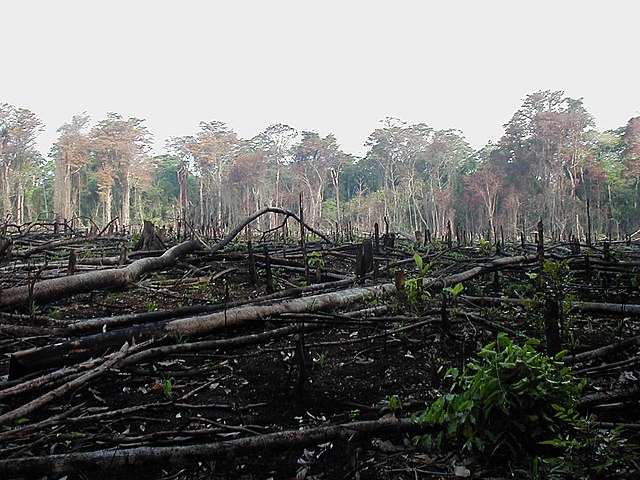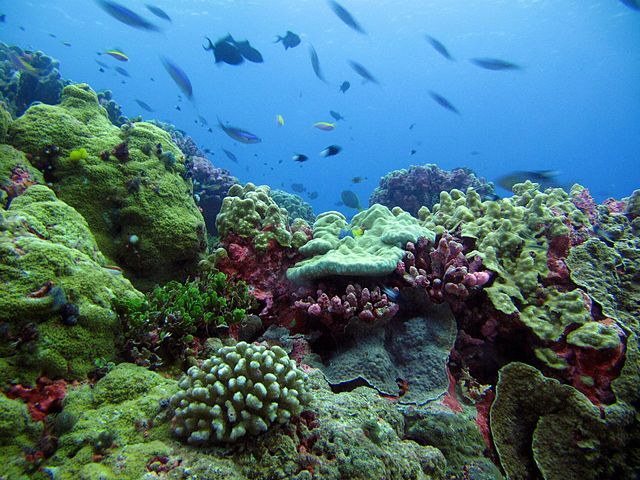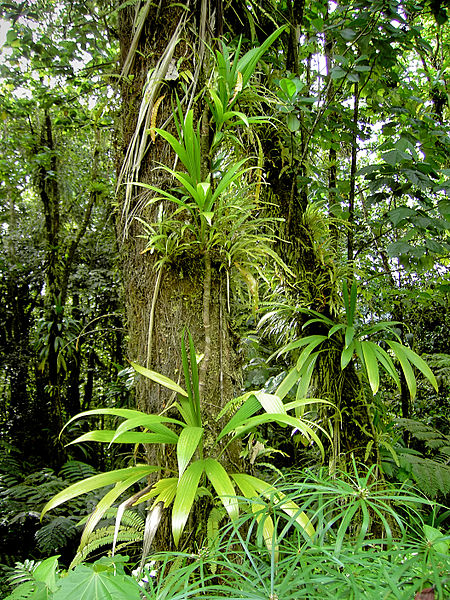Habitat destruction occurs when a natural habitat is no longer able to support its native species. The organisms once living there have either moved to elsewhere or are dead, leading to a decrease in biodiversity and species numbers. Habitat destruction is in fact the leading cause of biodiversity loss and species extinction worldwide.
Satellite photograph of deforestation in Bolivia. Originally dry tropical forest, the land is being cleared for soybean cultivation.
Jungle burned for agriculture in southern Mexico
Farmers near newly cleared land within Taman Nasional Kerinci Seblat (Kerinci Seblat National Park), Sumatra
Chelonia mydas on a Hawaiian coral reef. Although the endangered species is protected, habitat loss from human development is a major reason for the loss of green turtle nesting beaches.
In ecology, habitat refers to the array of resources, physical and biotic factors that are present in an area, such as to support the survival and reproduction of a particular species. A species habitat can be seen as the physical manifestation of its ecological niche. Thus "habitat" is a species-specific term, fundamentally different from concepts such as environment or vegetation assemblages, for which the term "habitat-type" is more appropriate.
This coral reef in the Phoenix Islands Protected Area provides habitat for numerous marine species.
Few creatures make the ice shelves of Antarctica their habitat, but water beneath the ice can provide habitat for multiple species. Animals such as penguins have adapted to live in very cold conditions.
Ibex in an alpine habitat
Rich rainforest habitat in Dominica








